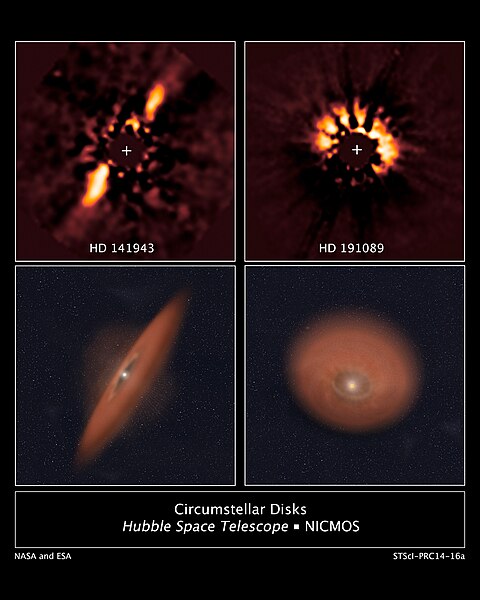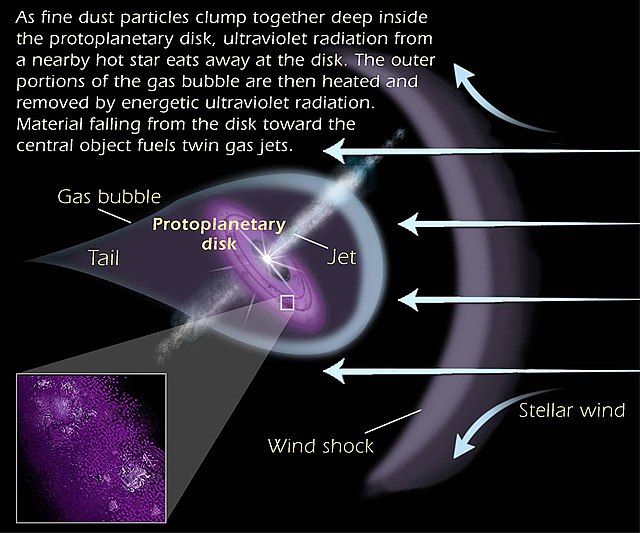A protoplanetary disk is a rotating circumstellar disc of dense gas and dust surrounding a young newly formed star, a T Tauri star, or Herbig Ae/Be star. The protoplanetary disk may also be considered an accretion disk for the star itself, because gases or other material may be falling from the inner edge of the disk onto the surface of the star. This process should not be confused with the accretion process thought to build up the planets themselves. Externally illuminated photo-evaporating protoplanetary disks are called proplyds.
Atacama Large Millimeter Array image of HL Tauri
A 2009 image showing fractions of stars that suggest some evidence of having a protoplanetary disk as a function of their stellar age in millions of years; The samples are nearby young clusters and associations.
Protoplanetary disk. Simulated spiral arm vs observational data.
An artist's illustration giving a simple overview of the main regions of a protoplanetary disk, delineated by the soot and frost line, which for example has been observed around the star V883 Orionis.
A circumstellar disc is a torus, pancake or ring-shaped accretion disk of matter composed of gas, dust, planetesimals, asteroids, or collision fragments in orbit around a star. Around the youngest stars, they are the reservoirs of material out of which planets may form. Around mature stars, they indicate that planetesimal formation has taken place, and around white dwarfs, they indicate that planetary material survived the whole of stellar evolution. Such a disc can manifest itself in various ways.
Circumstellar discs HD 141943 and HD 191089.. The bottom images are illustrations of above real images.
Illustration of the dynamics of a proplyd
Artist's impression of a transitional disc around a young star.
Primordial cloud of gas and dust surrounding the young star HD 163296.








